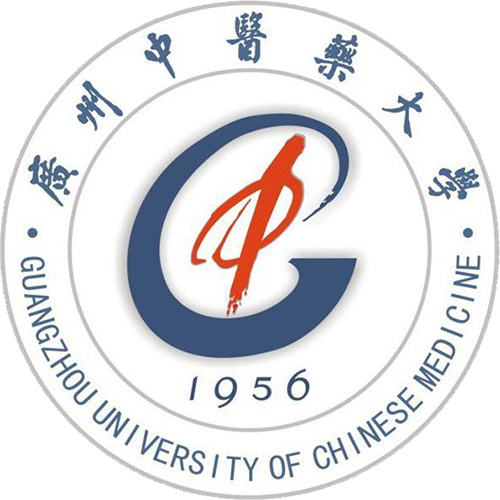Why Study in GZUCM
"On the ground there are five ridges and peaks from north; stretching to the horizon is the end of the Mainland in the south." Qu Dajun of the Qing Dynasty(1644-1911A.D.), described the landscape and scene of Guangzhou. Guangzhou was a river port and a sea port a trade port in the east, with mountains embracing rivers, and rivers surrounding the mountains, clouded mountain and the Pearl River extending to the horizon, mountains screening the city, waters reaching all the seas. "With mountains at the back, overlooking to the sea", the selection of Guangzhou was in conformity with the standard "the selection of the location of the country by the saints shall be situated in land that will never fall apart". The favorable geographical environment has helped to make Guangzhou what it is today, a city with a unique style and characteristic that will be eternal in its greatness.After the Qin and Han Dynasties(221B.C.-220A.D.), in Guangzhou there were established three local feudal political powers: South Yue, South Han, South Ming, called "three South's" in history books. Guangzhou was the capital of three dynasties and ten emperors, with the scope of jurisdiction including the whole Lingnan area. The outlay of the capital laid down the basis of the development of Guangzhou today. In spite of the vicissitudes in the 2000 years, Guangzhou has developed into a large metropolitan, its center being around Beijing Road and Zhongshansi Road, which was quite a rare case in the country. The place and the role of Guangzhou today is the result of long historical development.
From a small fishing village on Nanhai in ancient times to a modern metropolitan city, economic development is an important driving force. Five thousand years ago, the primitive people living here were engaged in primitive agriculture, fishing and hunting. Guangzhou is one of the ancient capitals that has the longest history, the biggest trading port that received oriental and occidental culture. Since ancient days Lingnan was far from the reach of emperors, receiving less of the influence of orthodox politics and culture. As it is on the sea coast, it has a tradition of trading with foreign countries. When the troops of Qin Dynasty(221-206B.C.) marched on Lingnan, "the whole army was stationed in the city of Panyu". Sima Qian says in his History Book that "Panyu is the metropolitan." It is evident that the then Panyu was not a small city. In the Tang Dynasty(618-907A.D.), there were thousand ships of foreign trade coming to and going from Guangzhou. "Sails covering the sky and ships vying against each other" was the scene on the Pearl River. Guangzhou had developed into the biggest port of foreign trade in China and was remarkably a prosperous metropolitan. In the Song Dynasty(960-1279A.D.), the number of foreign merchants coming to Guangzhou grew enormously. It is said there were ten thousand households of foreign merchants on the outskirts of Guangzhou. In the Yuan Dynasty(1271-1368A.D.), Guangzhou had trade relations with 212 countries and regions. In the Ming Dynasty(1369-1644A.D.), Guangzhou became the first big port for presenting tribute to the imperial court and trade. Around Haopan Street, there were pleasure houses of ten li long, concentration of merchants and tradesmen, prosperous food industry, dancing and singing; the situation was several times that at Qinhuai River in Nanjing. The countries that came to Guangzhou to present tribute to the imperial constituted 80% of the total. In the Qing Dynasty(1644-1911A.D.), Guangzhou was the only port for foreign trade for 83 years. And this was called "one port for trade". The trade in the famous "Thirteen Companies" was unprecedentedly prosperous; income from foreign trade became the most important source of national financial revenue.
Since the modern times Guangzhou was one of the areas that were the first to emigrate abroad, with a great number of overseas Chinese that had frequent contact with foreign countries, absorbing the advanced western productive technology and culture, which promoted the development in modern industry, communication, telecommunication and medicine of Guangzhou. At the turn of the 20th century, the city was built according to the planning for modern city, with city walls dismantled, streets paved, port and aviation developed, industrial base established in Xicun, which enable the city to develop continuously. After the founding of the People's Republic, Guangzhou entered into a period of peaceful socialist construction, with economic development developing rapidly. Industrial bases were built like Henan, Yuancun, Hedong, and Huangpu, laying the foundation for modern industry in Guangzhou. Streets like Dongfeng Road, Huanshi Road, Industry Dadao, Jiangnan Dadao, Xingang Road, Zhongshan Dadao, Zhongshanba Road and Fangcun Dadao, etc. became the skeleton of modern urban road netwrork. A great number of cultural, sports, entertainment devices have been built like Scenery Spots of Baiyun Mountain, Yuexiu Park, Liuhua Park, Dongshanhu Park, Luhu Park, Xiaogang Park and Cultural Park, raising the urban afforestation and providing places for the relaxation and recreation of the urban citizens.
After the opening and reform, Guangzhou has become the southern gateaway to exchanges between the inland and foreign countries. Giving full play to the extensive overseas in human relations, and geographical merits, Guangzhou took the lead in opening up to the outside world, intensifying the reform so that the economy has gained high-speed development. Among the ten big cities in the country, Guangzhou rank in the front in all-round strength. Surfing in the tide of commodity economy, Guangzhou people have absorbed and assimilated the ideology of modern market economy, manifesting the strong figure of the Chinese people confronted with international market competition. Guangzhou, this famous historical cultural city with special features of Lingnan, has a brilliant long history. The historical achievements are the basis for progress, while the glorious tradition is the motive force. In the socialist construction of modernization of China, Guangzhou will surely perform its function of pioneering and windowing.
 :
:
